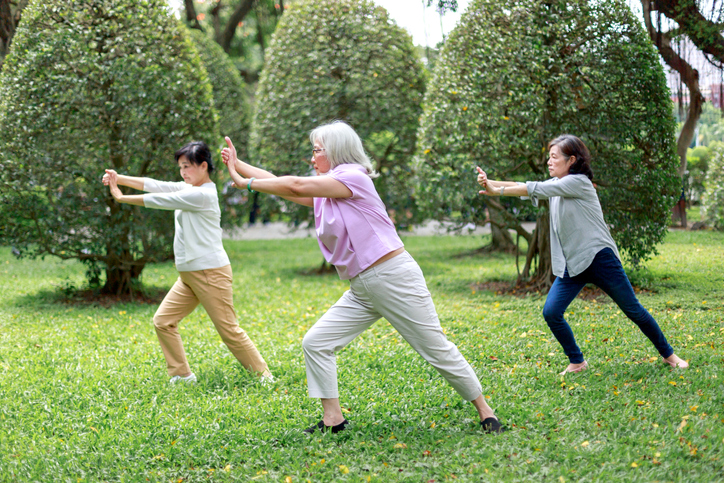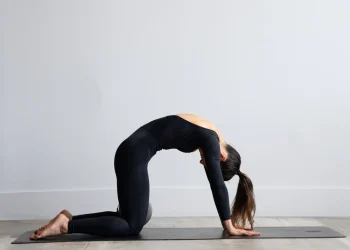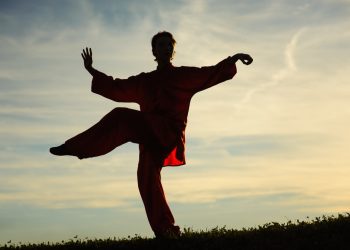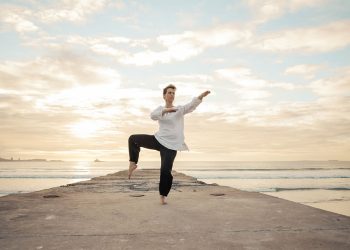Walking is perhaps the most fundamental human movement, yet most of us do it without conscious awareness. Tai Chi, the ancient Chinese martial art and wellness practice, offers profound principles that can transform ordinary walking into a meditative, health-enhancing practice. By applying core Tai Chi concepts to walking, we can cultivate balance, flow, and internal energy while performing an activity we do every day.
The Foundation: Understanding Tai Chi Principles
Tai Chi, which translates to “Supreme Ultimate,” is built upon principles derived from Taoist philosophy and Traditional Chinese Medicine. These principles emphasize harmony, balance, and the cultivation of qi (life energy). While Tai Chi forms are performed slowly with deliberate movements, the underlying principles can be applied to any physical activity, including walking. When we walk with Tai Chi awareness, we transform a mundane activity into a practice that nurtures body, mind, and spirit.
Yin-Yang Balance: The Dance of Opposites
At the heart of Tai Chi philosophy lies the concept of yin and yang—complementary opposites that exist in constant dynamic balance. In walking, this principle manifests in several ways that fundamentally change how we move through space.
Weight Distribution and Shifting
The most obvious application of yin-yang in walking is the continuous shift between substantial (yang) and insubstantial (yin). In conventional walking, we typically move with both feet partially weighted, creating tension and inefficiency. Tai Chi walking teaches us to make clear distinctions: one foot is fully weighted (yang) while the other is empty or lightly touching (yin). This complete weight transfer before stepping allows for greater stability, balance, and power with less effort.
As you walk, imagine that your weight distribution is never 50-50. Instead, practice making it 100 percent on one leg, then smoothly transitioning to 100 percent on the other. This doesn’t mean you wobble or rush—quite the opposite. The transition should be so smooth that an observer might not notice, yet you remain fully aware of which foot is substantial and which is insubstantial at every moment.
Rising and Sinking
Yin-yang also appears in the vertical dimension of walking. As weight shifts from one leg to the other, there is a subtle rise and sink—an undulation that creates a wave-like quality. This isn’t an exaggerated bobbing motion; rather, it’s a natural consequence of efficient weight transfer. As you step forward with an empty foot, you rise slightly. As you transfer weight onto that foot, you sink your center of gravity, grounding yourself before the next step.
This rising-sinking quality massages the internal organs, promotes circulation, and creates a gentle rhythm that soothes the nervous system. It transforms walking from a mechanical action into an organic flow.
Softness and Strength
Another yin-yang balance in Tai Chi walking is between softness and strength. The joints remain soft and flexible (yin), never locked or rigid, while the core and legs maintain just enough muscular engagement (yang) to support and propel the body. This balance prevents injury, reduces fatigue, and allows for responsive movement. You are simultaneously relaxed and alert, soft yet structured—embodying the Tai Chi principle of “steel wrapped in cotton.”
Flow: Continuity and Seamless Transition
One of Tai Chi’s most distinctive characteristics is its continuous, flowing movement. Nothing is abrupt; nothing is disconnected. Every movement emerges from the previous one and flows into the next, creating an unbroken stream of motion.
Continuous Movement Without Stops
In Tai Chi walking, we eliminate the micro-stops and starts that characterize ordinary walking. Most people unconsciously pause or hesitate at various points in their stride—when the heel strikes, when shifting weight, when pushing off. These tiny interruptions break the flow and require extra energy to restart momentum.
Instead, cultivate awareness of smooth transitions. As your heel touches the ground, continue rolling through your foot without stopping. As weight transfers, maintain the motion flowing forward. The push-off from the rear foot begins before the front foot is fully weighted, creating an overlapping, continuous cycle. Think of your walking as a wheel rolling smoothly along its path—constant, even, unstoppable.
Circular Movement Patterns
Tai Chi teaches that all movement is fundamentally circular or spiraling. Even when walking in a straight line, circular principles apply. The arms swing in gentle arcs. The hips rotate slightly with each step, creating a subtle spiral through the torso. The weight shift describes an arc from one foot to the other. The knee of the forward leg traces a gentle curve as it extends.
These circular movements are more efficient than linear ones because they work with the body’s natural biomechanics and maintain momentum. They also help distribute force evenly through joints, reducing wear and tear. As you walk, sense the curves and spirals in your movement, even when your overall direction is straight ahead.
Connecting Upper and Lower Body
Flow in Tai Chi walking requires that the entire body moves as an integrated unit. The legs don’t move independently while the torso remains rigid. Instead, movement is initiated from the center (the dantian, located about two inches below the navel) and ripples outward to the extremities.
As you step, feel how the movement begins with a subtle shift in your center of gravity. This shift causes the hips to rotate, which naturally allows the leg to step forward. The arms swing gently in response to the torso’s rotation, not as a separate action. Everything is connected, everything flows together. This integration creates efficiency and a profound sense of wholeness.
Energy Cultivation: Walking as Qigong
In Chinese philosophy, qi (or chi) is the vital life force that flows through all living things. Tai Chi is fundamentally a qigong practice—a method for cultivating, refining, and directing this energy. When we walk with Tai Chi principles, we transform walking into mobile qigong.
Breathing and Movement Coordination
Breath is considered the vehicle of qi. In Tai Chi walking, we coordinate breath with movement to enhance energy cultivation. Generally, we inhale as we gather or prepare to step, and exhale as we shift weight forward and complete the step. The breath should be natural, deep, and slow, originating from the lower abdomen rather than the chest.
This breath coordination serves multiple functions. It provides rhythmic timing for movement, ensures adequate oxygenation, massages the internal organs, and facilitates the flow of qi through the body’s meridian system. As you walk, pay attention to your breath without forcing it. Allow your steps to harmonize with your breathing cycle, finding a natural rhythm that feels effortless.
Awareness of Energy Centers
Tai Chi practitioners focus on specific energy centers, particularly the dantian. As you walk, maintain gentle awareness on this center point below your navel. Imagine that your movement originates from this place, as if you’re being pulled forward by a thread attached to your dantian. This focus helps root your awareness in your body’s center, promotes balance, and cultivates internal energy.
You might also feel a gentle warmth or tingling in your palms as you walk, which Tai Chi practitioners recognize as the movement of qi. Some practitioners focus on the bubbling well point (yongquan) on the soles of the feet, imagining drawing energy up from the earth with each step. These awareness practices don’t require belief in any particular theory—they simply direct attention inward, which has documented benefits for mind-body integration.
Rooting and Grounding
A fundamental principle in Tai Chi is “rooting”—establishing a stable connection with the earth. In walking, this means that each time you transfer weight to a foot, you don’t just place it down; you consciously sink your energy downward, imagining roots extending into the earth. This creates a sense of stability and allows you to draw energy upward from the ground.
Paradoxically, the better rooted you are, the lighter and more agile you feel. This is because rooting isn’t about being heavy or stuck; it’s about having a clear energetic connection with the earth that provides a stable foundation for movement. As you practice rooting with each step, you may notice increased balance, reduced impact on your joints, and a sense of being supported by the ground beneath you.
Practical Application: Walking Meditation
To practice Tai Chi walking, begin by simply bringing awareness to your ordinary walk. Notice your weight distribution, your breath, the feeling of your feet on the ground. Then gradually introduce the principles:
Start with slow, deliberate steps, making clear distinctions between weighted and empty legs. Feel the complete weight transfer before lifting your rear foot. As you become comfortable with this, add attention to your breath, coordinating inhalation and exhalation with your steps. Notice the flow of movement—are there stops or pauses? Can you make your walking more continuous?
Pay attention to your center of gravity. Is it stable, or does it bob and weave? Can you move your whole body as one integrated unit, with movement originating from your core? Relax your shoulders, soften your joints, and maintain an upright but not rigid posture.
You don’t need to practice Tai Chi walking constantly. Even five to ten minutes of mindful walking practice daily can have profound effects on your overall movement patterns, balance, and well-being. Over time, the principles will naturally integrate into your everyday walking.
Benefits of Tai Chi Walking
Research has shown that Tai Chi practice offers numerous health benefits, including improved balance and fall prevention, reduced stress, enhanced cardiovascular health, and better joint function. These benefits extend to Tai Chi walking practice as well.
The slow, mindful nature of Tai Chi walking makes it accessible to people of all ages and fitness levels. Unlike high-impact exercises, it places minimal stress on joints while still providing significant conditioning. The meditative aspect offers mental health benefits, reducing anxiety and promoting a sense of calm centeredness. Many practitioners report that Tai Chi walking helps them feel more grounded and present throughout their day.
Conclusion: Every Step a Practice
Tai Chi teaches that there is no separation between practice and daily life. When we walk with Tai Chi principles, every journey—whether to the kitchen, through a park, or across a parking lot—becomes an opportunity for cultivation. We are simultaneously moving through space and moving through a meditation, training our bodies and calming our minds.
The beauty of Tai Chi walking is its simplicity and accessibility. You need no special equipment, no dedicated space, no specific time set aside. You simply need to bring awareness to something you already do many times each day. Through this awareness, informed by ancient principles of balance, flow, and energy cultivation, walking becomes not just a way to get somewhere, but a practice that enriches every aspect of your life.
As the Tao Te Ching reminds us, “A journey of a thousand miles begins with a single step.” In Tai Chi walking, we discover that each step itself is the journey—a complete practice of presence, balance, and harmony with the fundamental forces that move through all life.
- what is tai chi walking and its principles
- ancient principles for modern practice
- applying principles to techniques
- chi energy principles in walking
- mind-body principles
- principles of form and foundation
- principles of mindful movement
- qigong principles in walking
- principle of intentional movement
- holistic principles of practice






